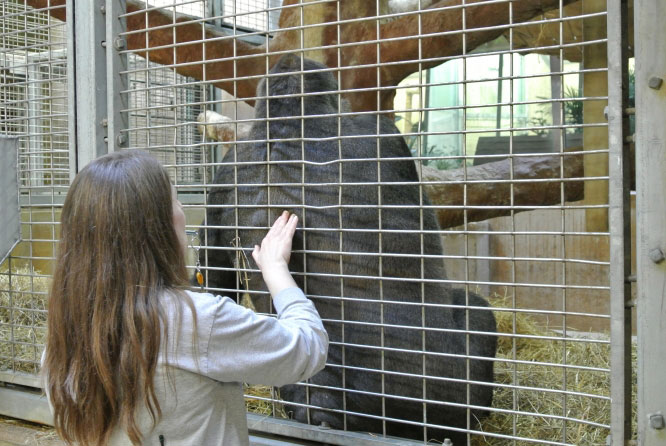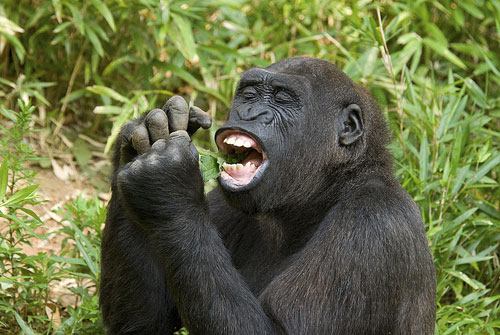National Zoo Gorillas are the first to participate in heart disease study
The same device used to detect early warning signs of heart disease in humans will now benefit two male sub-adult gorillas at the Smithsonian’s National Zoo. Twelve-year-old Kwame and 10-year-old Kojo are the first western lowland gorillas (Gorilla gorilla gorilla) to participate in a study lead by the Great Ape Heart Project that will help veterinarians better detect and treat heart disease—the leading cause of death of male gorillas in human care.
On Feb. 2, Zoo veterinarians inserted an Implantable Loop Recorder beneath Kojo’s skin and between his shoulder blades. Kwame’s procedure took place on March 14. About the size of a USB drive, the ILR records electrocardiogram waves and allows animal care staff to analyze trends in the gorillas’ heart rates, rhythms, strengths and timing of electrical pulses.
“The Great Ape Heart Project is at the forefront of combating heart disease in gorillas, and we are honored to be one of the first institutions participating in this innovative research,” said National Zoo Director Dennis Kelly. “We hope that the information we learn will benefit this species and many others as well.”
Kwame and Kojo are ideal candidates for this study; they are clinically healthy yet the odds that they will develop heart disease later in life are high because of how common the disease is in gorillas. The Great Ape Heart Project chose them for another reason, as well: the Zoo’s training program allows animal care staff to monitor an animal’s health, administer medical procedures and provide preventive care without the use of anesthesia or restraints. Kwame and Kojo willingly present their backs to keepers Amanda Bania and Becky Malinsky on cue as part of everyday training. This ensures veterinarians will be able to scan the ILR, collect data and monitor trends in the gorillas’ health. The data will be shared among institutions and facilities that care for these primates. In addition, keepers will continue behavioral research projects and look for physical changes in Kwame and Kojo’s health.
“Even minute changes in their EKG waves could signal the onset of heart disease,” said Suzan Murray, chief veterinarian and head of the Zoo’s Department of Animal Health. “Detection is a major step in combating the disease.”
The notion of using ILRs in gorillas was first introduced by Dr. Ilana Kutinsky, co-director of the Great Ape Heart Project. As a cardiac electrophysiologist whose expertise lies in human medicine, she has seen ILRs save human lives.
“To ensure that these fascinating animals are around for generations to come, we must do everything possible to give them the best quality of life,” Kutinsky said. “Ultimately, this device will help improve great ape longevity in zoos.”
Kutinsky attended Kojo’s surgery and assisted Zoo veterinary staff. Murray and Kutinsky are two of the four scientists who have been at the forefront of gorilla heart disease for over a decade. The other doctors are Hayley Murphy and Pam Dennis.
In human care, western lowland gorillas can live to be upwards of 50 years old. In its native tropical forests of Western and Central Africa, however, a gorilla’s lifespan is about 35 years. Increased hunting, outbreaks of the Ebola virus and poorly regulated development projects threaten these great apes as well as their habitats. The International Union for Conservation of Nature lists the western lowland gorilla as critically endangered.
Visitors to the Smithsonian’s National Zoo can see Kwame, Kojo and the other four members of the gorilla troop at the Great Ape House.

Gorilla keeper Becky Malinksy trains Kwame to present different parts of his body, specifically his back, so that she can download data from the Implantable Loop Recorder.
Posted: 4 April 2012
-
Categories:
Collaboration , Feature Stories , Science and Nature , Zoo & Conservation Biology Institute





